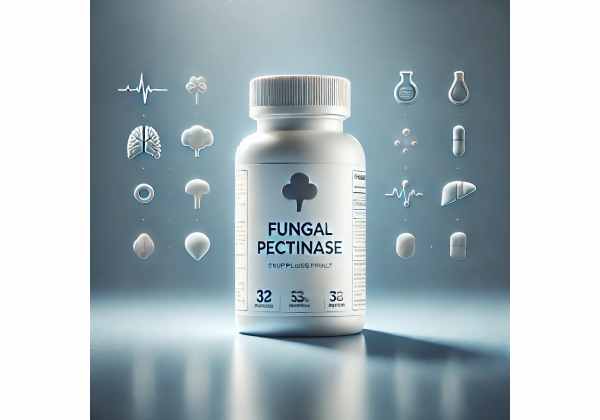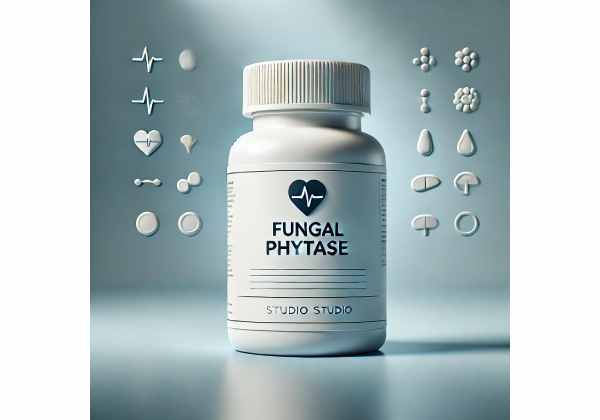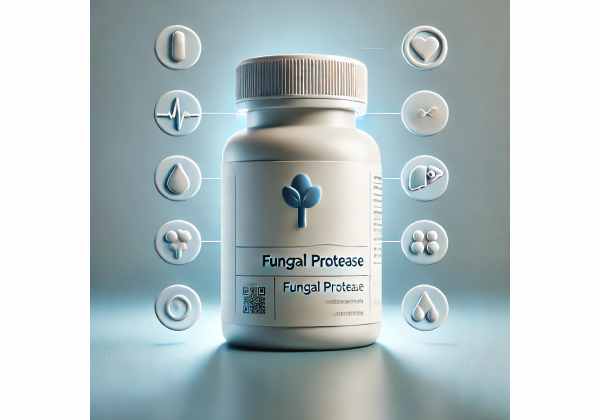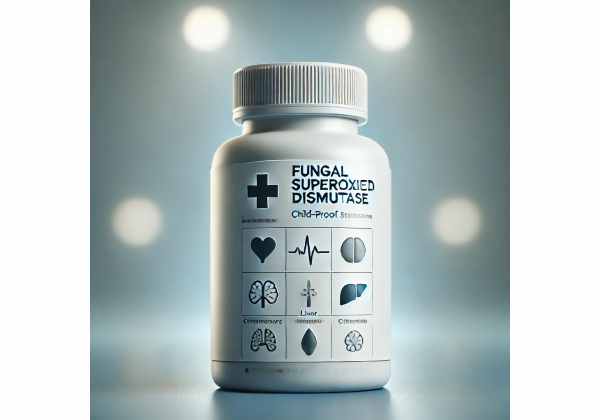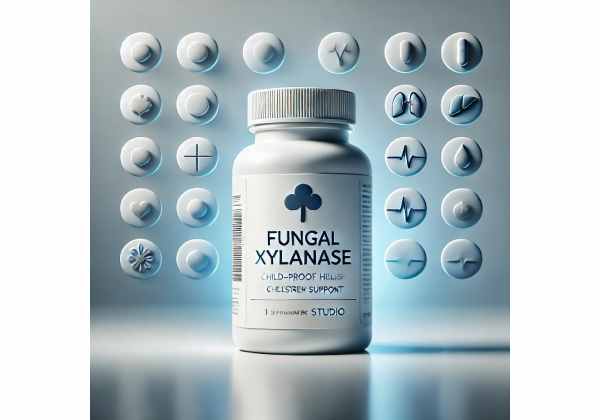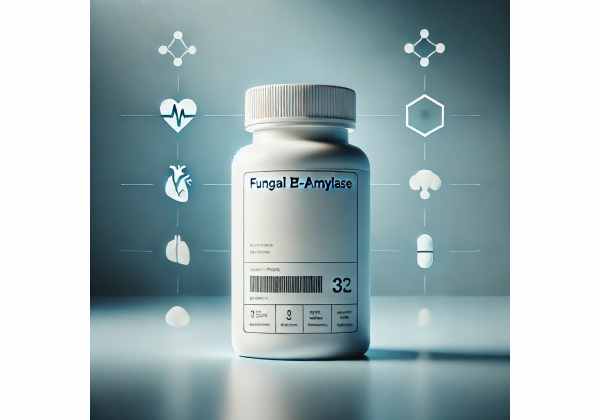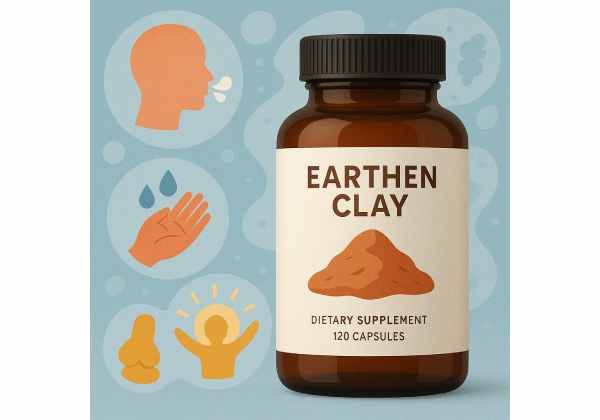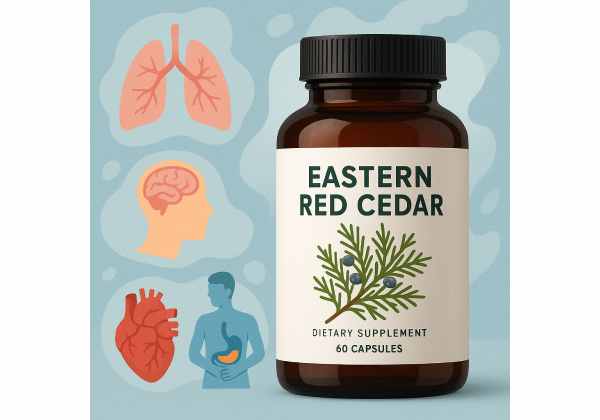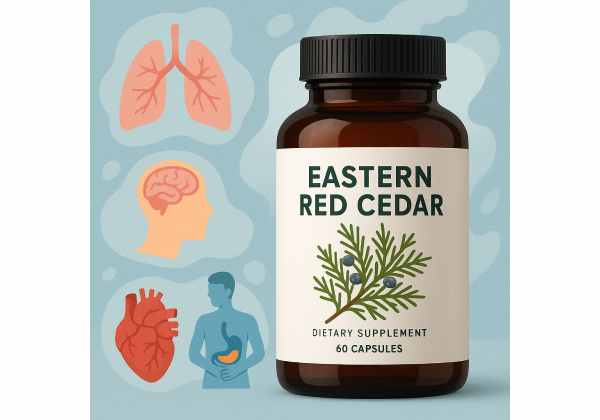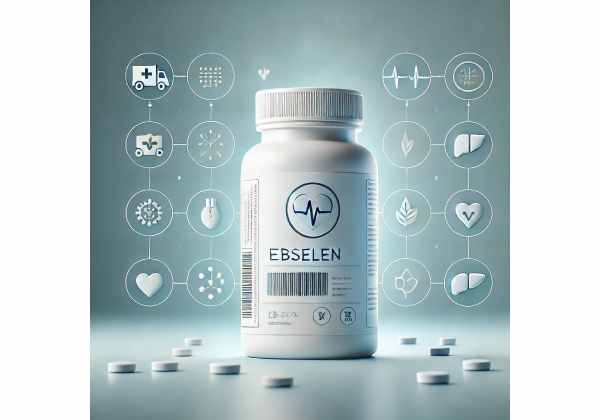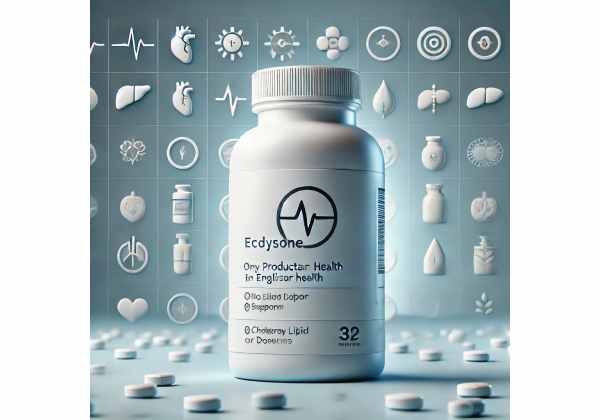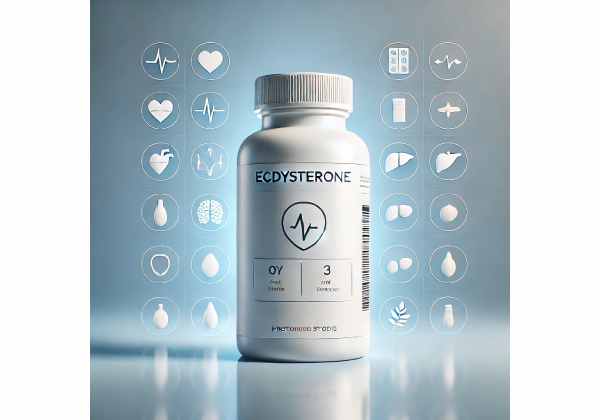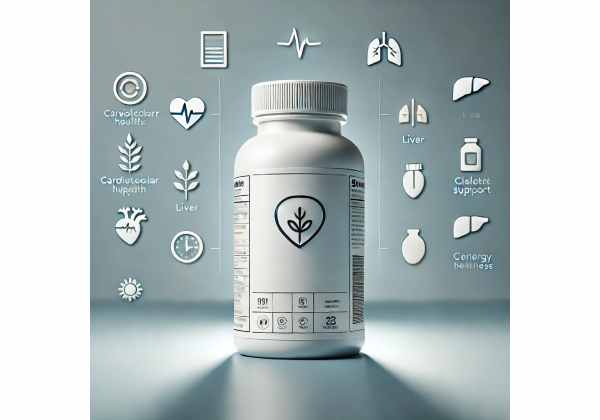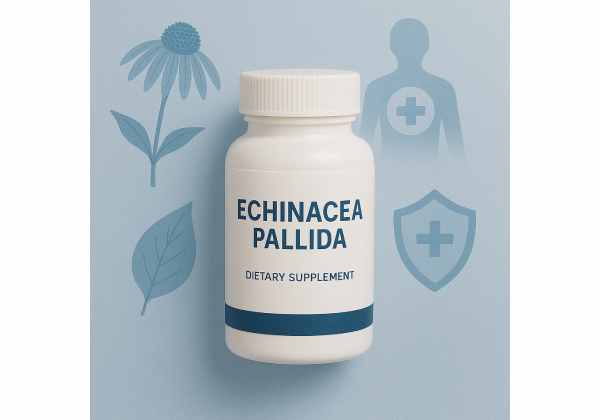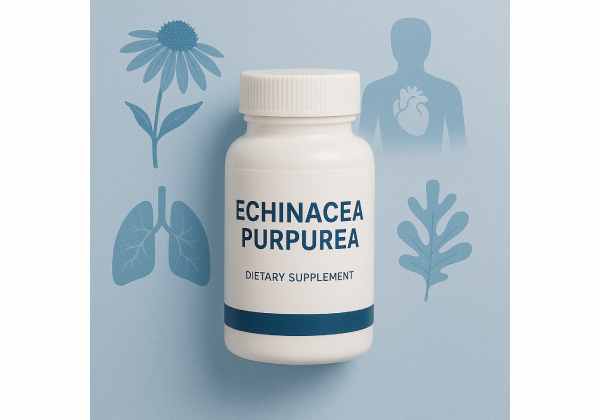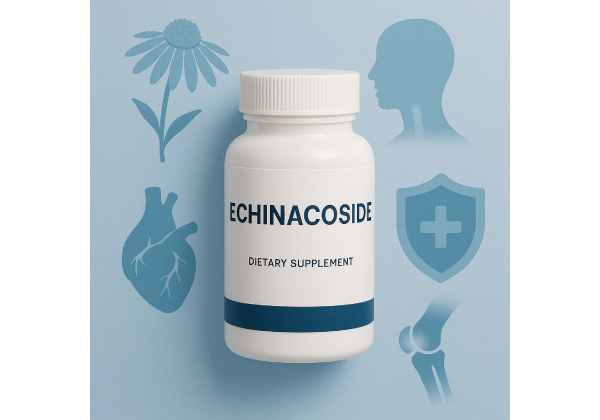Fungal Pectinase: How It Works, Dosage, Benefits and Safety
Fungal pectinase is a group of enzymes from safe, food-grade fungi—most often Aspergillus species—formulated to break down pectin, the gel-forming fiber abundant in fruits and many plant foods. By cutting pectin’s long chains into smaller fragments, these enzymes can reduce meal viscosity, support comfort when eating high-pectin fruits, and improve the clarity and yield of juices and wines in...
Fungal Phytase: Benefits, How It Works, and Safe Dosage
Fungal phytase is an enzyme that unlocks minerals from plant foods. Found in safe, food-grade fungi like Aspergillus niger and Aspergillus oryzae, it cuts phosphate groups from phytic acid (phytate)—the storage form of phosphorus in grains, legumes, nuts, and seeds. Because phytate binds iron, zinc, calcium, and magnesium, high-phytate diets can limit mineral absorption. By trimming phytate into smaller,...
Fungal Protease: How It Works, Safe Dosage, and Practical Uses
Fungal protease is a broad term for protein-digesting enzymes produced by fungi such as Aspergillus oryzae and Aspergillus niger. These enzymes break long dietary proteins into smaller peptides and amino acids, supporting digestion and enabling diverse food and industrial applications. In supplements, fungal protease typically appears as “protease 3.0,” “protease 4.5,” or “protease 6.0,” shorthand for the pH where...
Fungal Superoxide Dismutase: Benefits and Side Effects with Dosage
Fungal superoxide dismutase (SOD) is an antioxidant enzyme made by fungi such as Aspergillus and yeasts. Like human SOD, it converts superoxide radicals into hydrogen peroxide and oxygen—an early step in your body’s defense against oxidative stress. Because oral SOD is a protein that can be degraded during digestion, modern supplements often protect it with carriers (for example, gliadin...
Fungal Xylanase: Digestive Benefits, Safe Dosage, and Real-World Uses
Fungal xylanase is a carbohydrate-digesting enzyme that targets xylans—the hemicellulose fibers abundant in cereal brans (wheat, rye, barley, oats), legumes, and many plant foods. Produced by safe, food-grade fungi such as Trichoderma reesei, Aspergillus niger, or Aspergillus oryzae, it cleaves the β-1,4 linkages along the xylan backbone, thinning viscous digesta and releasing smaller sugars and xylo-oligosaccharides. In the food...
Fungal α-amylase: Digestive Benefits, Label Units, Dosage, and Safety
Fungal α-amylase is one of the most widely used carbohydrate-digesting enzymes in food manufacturing and digestive supplements. Produced by safe, non-pathogenic strains of fungi (most commonly Aspergillus oryzae), it cuts long starch chains into shorter sugars that the body can absorb. In the food industry, it fine-tunes bread quality, supports brewing, and helps make syrups. As a supplement, it’s...
Earthen Clay: Top Detox, Skin, and Digestive Benefits, Dosage, and Risks Explained
Earthen clay has been used for centuries to clarify skin, settle an upset stomach, and absorb impurities. Today, it appears in face masks, antidiarrheal powders, toothpaste, and even specialized wound dressings. “Earthen clay” isn’t a single substance—it’s a family of mineral-rich powders such as bentonite (montmorillonite), kaolin, illite, and smectites (e.g., diosmectite). These clays share a useful trait: layered...
Eastern Hemlock: Top Health Benefits, Herbal Uses, Dosage, and Side Effects Guide
Eastern hemlock (Tsuga canadensis) is a North American conifer with a long history in forests, horticulture, and traditional home use. People are most familiar with it as a graceful shade tree, yet its needles, cones, and wood also provide a distinctive evergreen aroma used in diffusers and some topical blends. Beyond scent, the species is ecologically important: hemlock stands...
Eastern Red Cedar Benefits: Herbal Uses, Safety Warnings, and How to Use Effectively
Eastern red cedar (Juniperus virginiana) is a fragrant North American conifer best known for its durable, moth-repelling wood and the warm, woody “cedarwood” aroma in closets, soaps, and colognes. Beyond carpentry and perfumery, its steam-distilled wood oil (often labeled “Cedarwood Virginia” essential oil) is used at home for scenting rooms, simple natural insect repellents, and occasional skin applications when...
Ebselen Explained: Neuroprotection, Antiviral Benefits, Dosage, and Side Effects
Ebselen is a lab-made organoselenium compound that has attracted attention as a potential therapy for ear disorders, mood episodes, and infections. It acts as a glutathione peroxidase mimic (a key antioxidant enzyme) and also interacts with certain proteins by bonding to cysteine residues. In small, well-designed human studies, ebselen reduced temporary hearing loss after loud sound exposure and showed...
Ecdysone Benefits for Muscle Growth: Uses, Research, Dosage, and Risks
Ecdysone is part of a family of naturally occurring steroids called ecdysteroids. In insects, it drives growth and molting; in plants (as “phytoecdysteroids”), it helps deter pests. In human nutrition and sports, the most discussed member is actually 20-hydroxyecdysone (often labeled “ecdysterone”), a close chemical cousin frequently sold in supplements. Early human studies suggest potential support for muscle performance...
Ecdysterone Explained: Athletic Performance, Proper Dosage, and Health Impacts
Ecdysterone (also called 20-hydroxyecdysone) is a naturally occurring plant steroid found in spinach, quinoa, and several adaptogenic herbs. In recent years, it has drawn attention as a potential performance enhancer that may support lean mass, strength, and recovery—without acting like a typical anabolic steroid. Early human trials and pharmacology studies suggest ecdysterone influences muscle protein synthesis and cellular signaling...
Echinacea angustifolia: Natural Immune Support, Proven Benefits, Dosage, and Safety
Echinacea angustifolia—often called narrow-leaf coneflower—has a long history in North American herbal practice for seasonal respiratory support. Today it appears in teas, tinctures, capsules, and liquid extracts aimed at helping you get sick less often or bounce back sooner. What sets E. angustifolia apart from its sibling species (like E. purpurea) is its root-centric use and distinctive profile of...
Echinacea pallida: Top Health Benefits, How It Works, Dosage, and Side Effects
Echinacea pallida—often called pale coneflower—is one of the three most used Echinacea species in supplements, alongside Echinacea purpurea and Echinacea angustifolia. Traditionally valued for immune support, E. pallida root extracts are formulated for short-term use at the first signs of a cold or during high-exposure periods. Modern interest focuses on standardized preparations rich in phenolic compounds (such as echinacoside)...
Echinacea purpurea: Natural Immune Support, Health Benefits, Safe Dosage, and Potential Side Effects
Echinacea purpurea (purple coneflower) is among the most studied herbal remedies for upper-respiratory infections. Extracts from its aerial parts and roots contain alkamides, caffeic-acid derivatives (such as cichoric acid), and polysaccharides that appear to modulate innate immunity and help the body respond to viral challenges. Modern products range from freshly pressed herb juice and hydroethanolic tinctures to standardized tablets...
Echinacoside: Cognitive Health, Anti-Aging Benefits, Dosage, and Side Effects
Echinacoside is a phenylethanoid glycoside best known from Cistanche species (Rou Cong-Rong in traditional use) and some Echinacea plants. Over the last decade, it has attracted attention for neuroprotective, antioxidant, and anti-inflammatory actions seen in preclinical studies, alongside early human data from Cistanche extracts standardized to echinacoside. Consumers encounter it in capsules, powders, and multi-ingredient formulas targeting brain health,...

